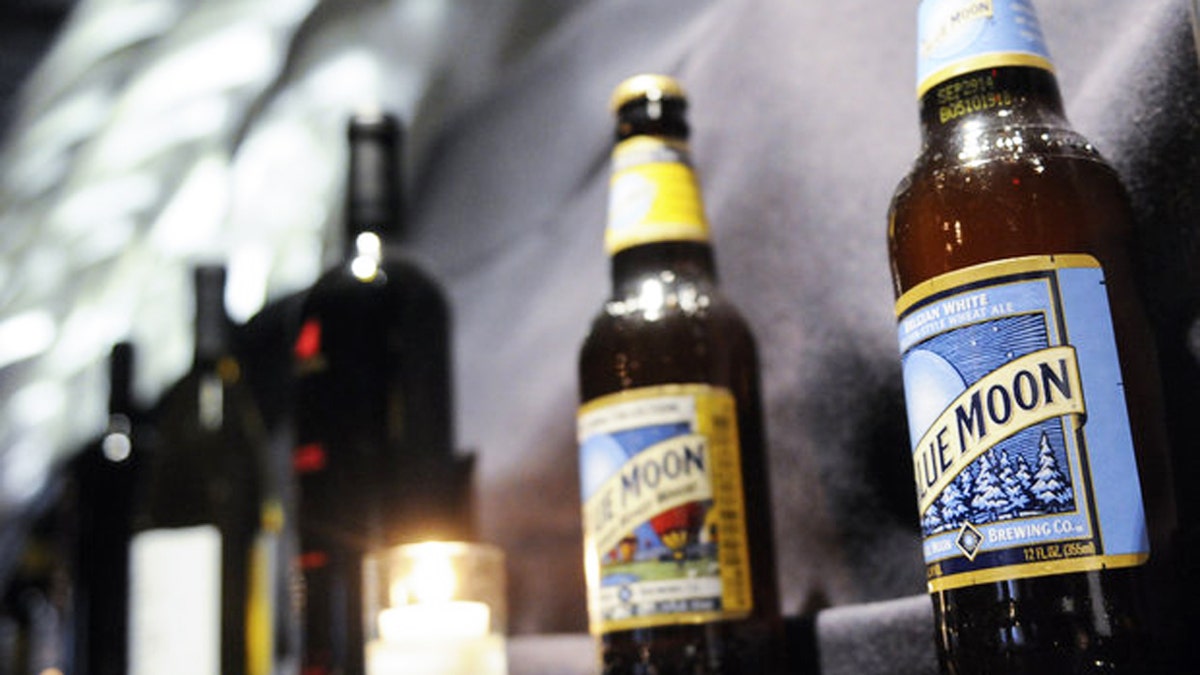
MillerCoors, the makers of Blue Moon and dozens of other beer brands, has agreed to adding nutritional information to its product labels.
Confused about what’s really in your beer? You’re not alone.
The alcoholic beverage industry has been pushing back on consumer requests to include more nutritional information on product labels for years. But now big brewers are changing their tune.
A trade group that represents companies like Anheuser-Busch and MillerCoors said Tuesday that it’s pushing members to voluntarily reveal more details on labels, packaging and websites about what’s in their beer by the end of 2020.
The Beer Institute, whose members produce more than 80 percent of the volume of beer sold in the U.S., is also encouraging brewers to show when a beer was brewed, to list ingredients, and to point to a website or include a code that can be scanned with a smartphone for more information.
HeinekenUSA, Constellation Brands Beer Division, North American Breweries and Craft Brew Alliance also have agreed to follow the guidelines, the Beer Institute said.
Michael Jacobson, the president of the Center for Science in the Public Interest, an advocacy group, said that the absence of calorie labeling on cans and bottles has helped obscure what a major dose of calories alcohol can be, and that the beer companies should go further.
“Brewers are allowed to artificially color, flavor, sweeten and preserve their products, as well as use foam enhancers,” he said in a statement. “If the industry takes pride in its ingredients, it should list them on labels and not simply on the web.”
But smaller brewers may have a harder time adding detailed labeling information to beers.
The Brewers Association, which represents craft brewers that produce 6 million barrels of beer or less annually, said that while the group supports transparency in labeling, it believes compliance might be difficult for microbrewers who, in addition to having fewer resources, sell more small-scale seasonal products with varying ingredients. That would mean spending more money for the greater variety of beers those brewers make, stretching already tight profit margins. The trade group’s CEO Bob Pease said in an email to the St. Louis Post-Dispatch that "the approach the large brewers have taken may not be feasible for smaller brewers, many of whom offer dozens of small scale, seasonal products every year."
The Brewers Association said it's working separately with the U.S. Food and Drug Administration and the U.S. Department of Agriculture to develop a plan for beer styles--- rather than specific individual brands—to members comply with any FDA labeling rules and allow consumers to find nutritional information on the USDA Nutrient Database.
Nick Petrillo, a beverage industry analyst for IBISWorld, said he thinks the larger companies will use the new labels to their advantage, enabling them to back up claims of lower-carb beer. But he doesn’t foresee “Big Beer” using the new transparency to target microbrewers who aren’t compliant.
“I think this is where the industry is heading,” he said. “Consumers want to know what’s in the products they use.”
Last year, liquor giant Diageo, which owns brands like Guinness, Captain Morgan and Smirnoff, became one of the first major alcohol producers to start adding nutritional info to its product labels and provide more detailed content on its website DRINKiQ.com.
The Associated Press contributed to this report.
